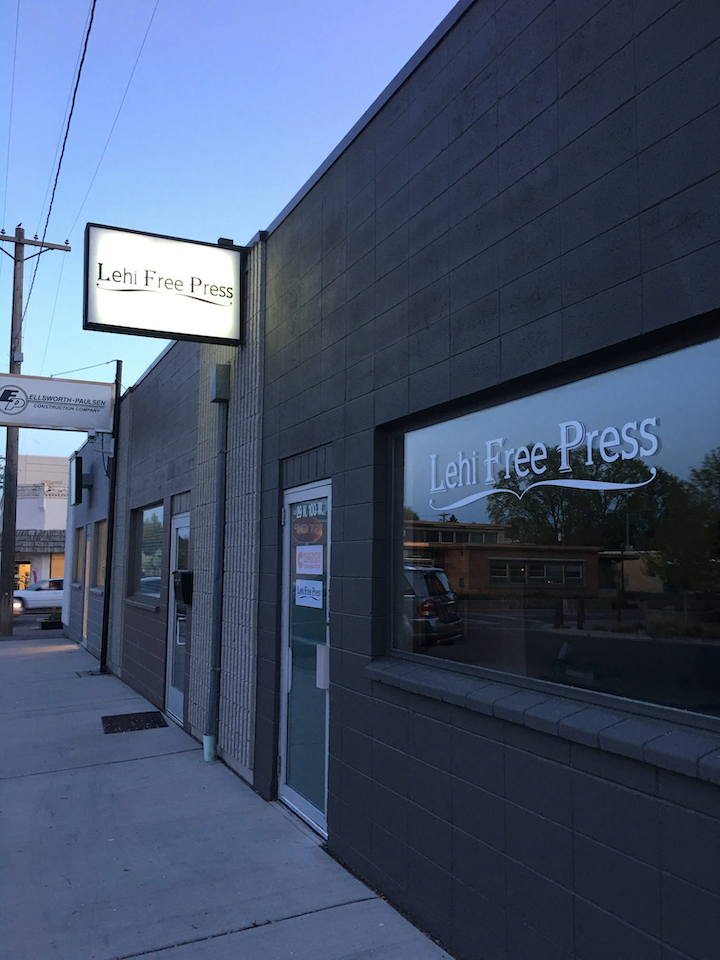Connect with us
Published
1 year agoon

As a community, we are entrusted with providing our children with the best possible education. Alpine School District has grown beyond its capacity to equitably provide the best educational resources and opportunities for children in our community. However, there is hope on the horizon. Six cities entered into an interlocal agreement to provide residents with a choice to split from Alpine School District and form a Central School District.
After thorough consideration, the Lehi Free Press editorial board fully endorses Proposition #11’s proposal to form a Central School District. Additionally, and by association, we fully endorse Proposition #14’s proposal to form a West School District.
Alpine School District is the largest district in the State of Utah. It covers 787 square miles, oversees 92 schools, and educates nearly 85,000 students. It is larger than 99.9% of school districts in the nation, and its boundaries include some of the fastest-growing cities and areas in the state and country. While size and exponential growth can be managed, Alpine School District is incapable of meeting the numerous needs of the district at scale.
The six cities that comprise the proposed Central District represent 45% of Alpine School District’s taxable value and 41% of its student enrollment. Even so, the school board’s majority voting block has been slow to recognize and address the area’s educational needs. By no means does a city expect to receive resource allocation commensurate with its property tax contribution; city residents and businesses contribute property taxes to a larger district because there is an understanding that all boats rise with the tide.
However, the needs of educators and students in Alpine School District’s central and west regions aren’t being met because the district cannot properly prioritize needs across all areas. Moreover, the district has failed to address a known pattern and practice of disproportionately allocating resources to support an older, slow-/no-growth areas to the detriment of the central and west regions. This disparity in attention and allocation was and is best revealed by statements made by a member of the board’s majority voting bloc.
“Let me tell you that Orem is in for a big wakeup call when the rest of the district understands how much money is pushed into Orem through Title I schools [and] through compensation. We have low enrollments that don’t sustain a full curriculum in our high schools. [The rest of the district has] to supplement it. In addition, we have a number of ineligible bus routes. We get board-voted [full-time employees] to reduce our class [sizes]. A lot of money gets pushed into Orem. And when the rest of the district realizes it, we may be in trouble,” said board member Ada Wilson on March 30, 2022.
The rest of the district realizes it now.
To be clear, this is not an “us versus them” evaluation. This is an evaluation of the board’s inability to meet and some board members’ apathy toward the needs of children and educators in the proposed Central and West School Districts. This vote provides an opportunity to examine school board action and inaction in conjunction with facts, figures, and studies and decide what’s best for our children now and for future generations.
Smaller school districts have tangible benefits over larger school districts.
• Local oversight and accountability
• Local tax revenue directed to local needs
• Quicker responses to local challenges
• Ability to focus on unique local issues, values, and goals
• Increased community engagement and involvement
• Improved collaboration between board members and educators, students, and parents
• More competitive compensation and benefits for administrators, teachers, and staff
Supporting the creation of the Central School District and West School District isn’t taken lightly. We, the editorial board, have closely watched extensive community input and covered school board meetings, municipal meetings, and town halls. We have taken our position to support the propositions because of years of watching, listening, examining, scrutinizing, and reporting. Now, it’s up to the community to make their voices heard through their vote.
Parents, teachers, and education advocates have voiced concerns about our current educational affairs for some time. These concerns include issues with resource allocation, disparities in attention and allocation, and the district’s inability to meet the needs of the entire district in a fair and unbiased manner. Communities have seen these issues play out in Alpine School District, and it’s clear that a change is needed.
We, the editorial board, urge the community to vote “yes” on Proposition #11 and Proposition #14. A vote for creating the Central School District and the West School District is a vote for an equitable, more personalized, more efficient, and more effective education system for all our children and our educators.



Lehi Free Press


Falcon boys take 2nd in hoops tourney


Lehi hosts largest Chanukah celebration in Utah County history


Falcon girls hoops goes 1-2 in tight stretch


Pioneer girls drop three to tough teams in hoops


Give a piece of Lehi from the Lehi Historical Society gift shop


Students, Jazz Bear team up for annual holiday shopping event


The Ruth’s “Charlie and the Chocolate Factory” a whimsical treat


Lehi Free Press


UCHD confirms new measles case in Utah County
